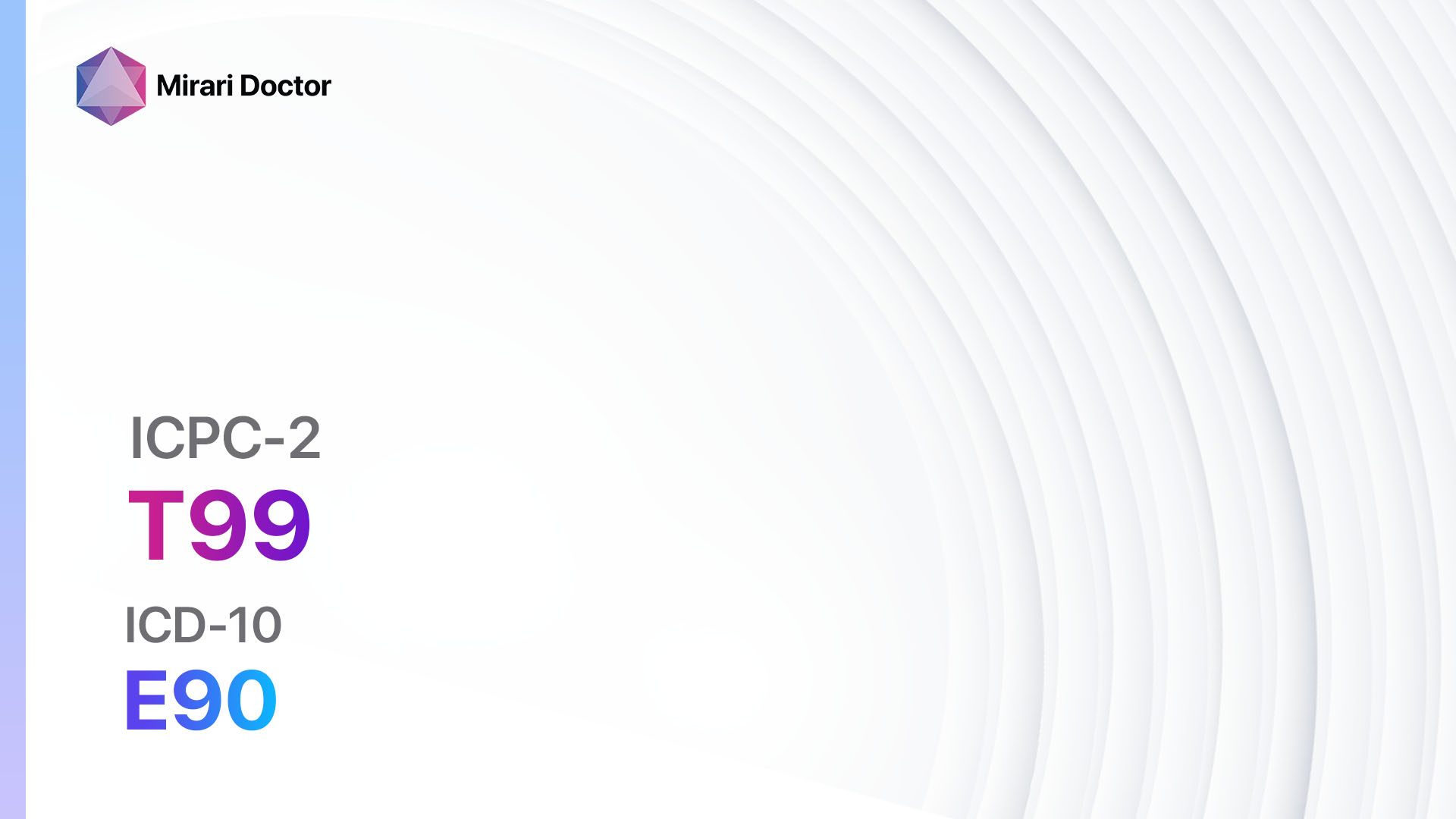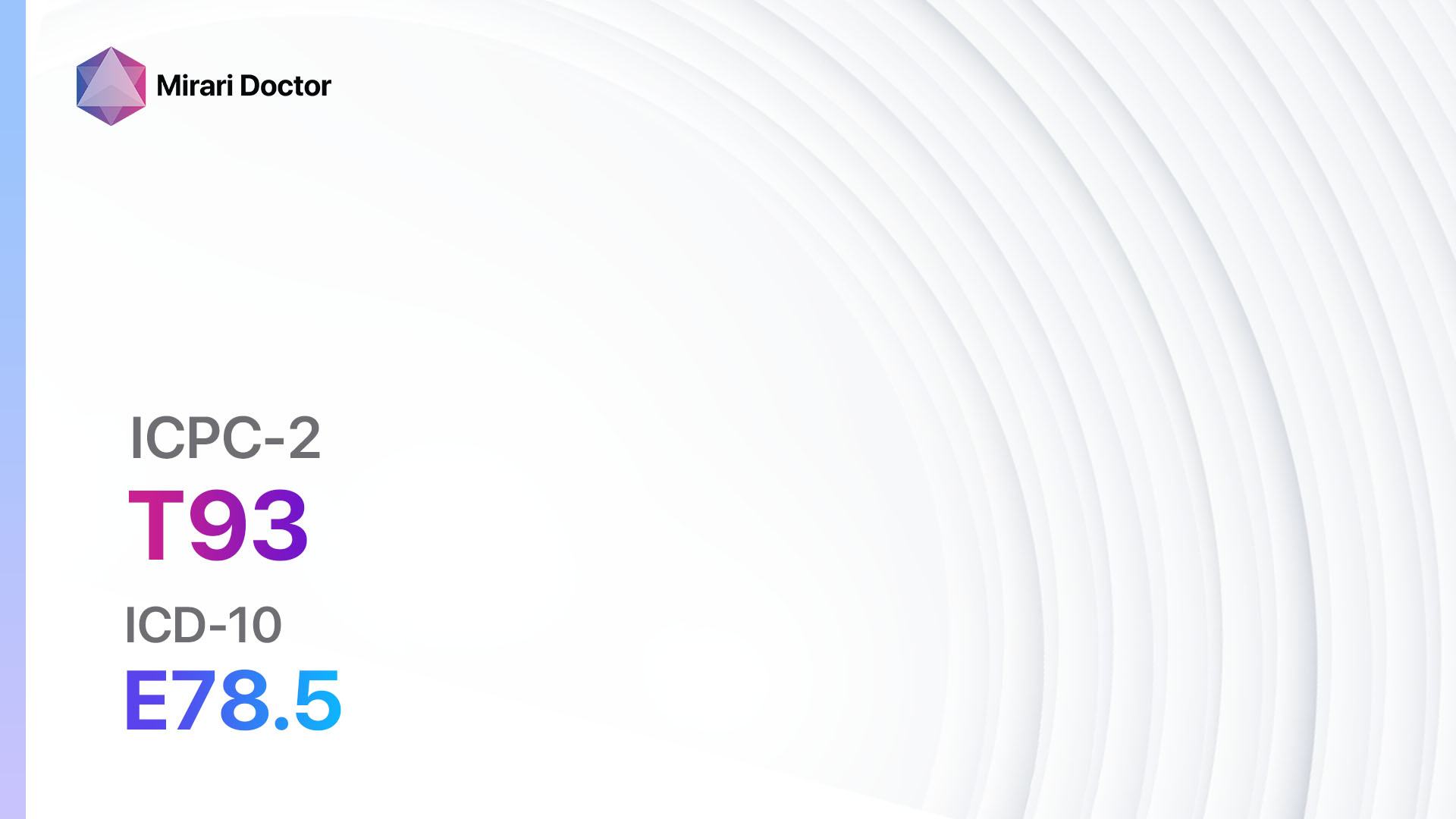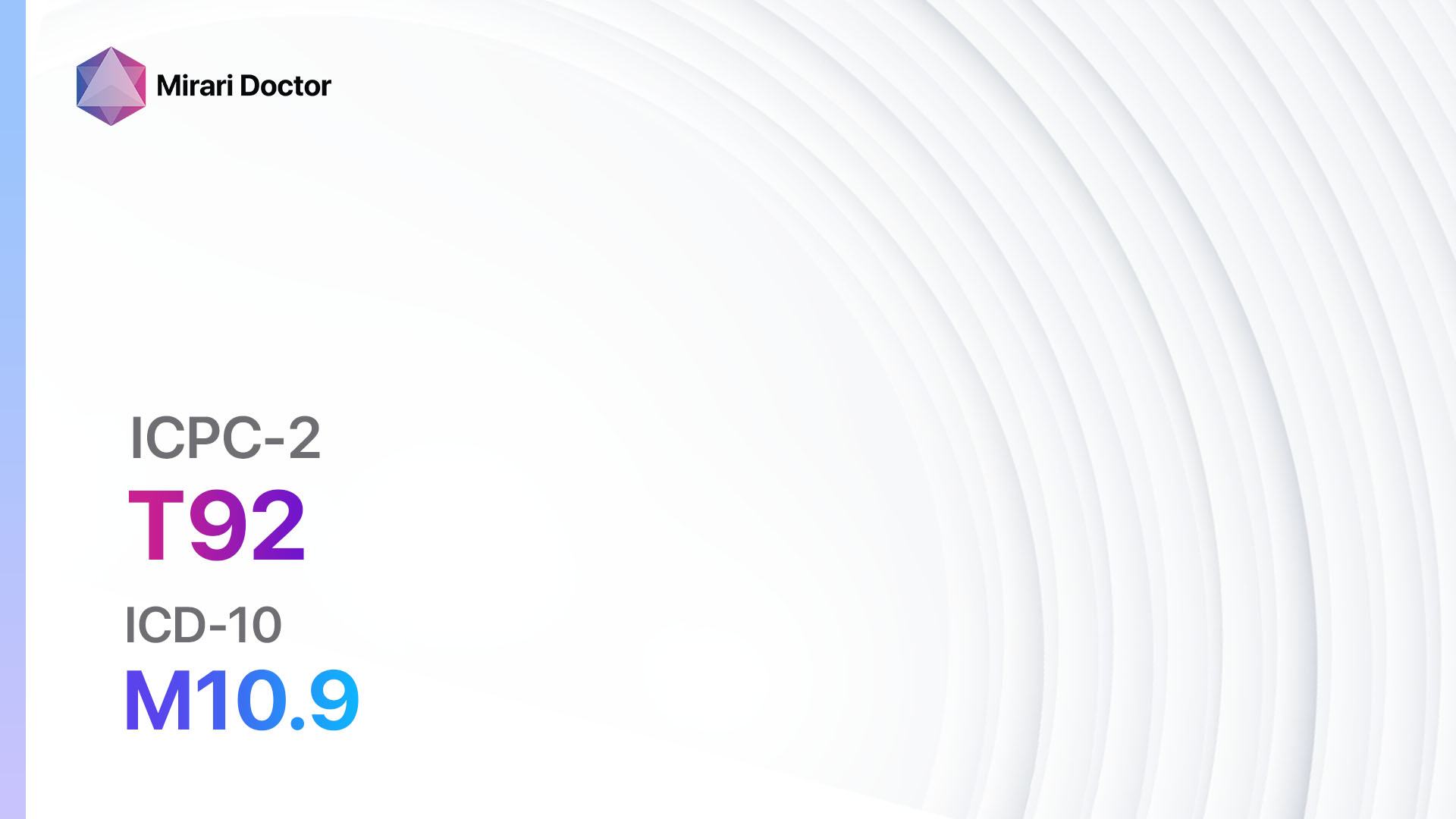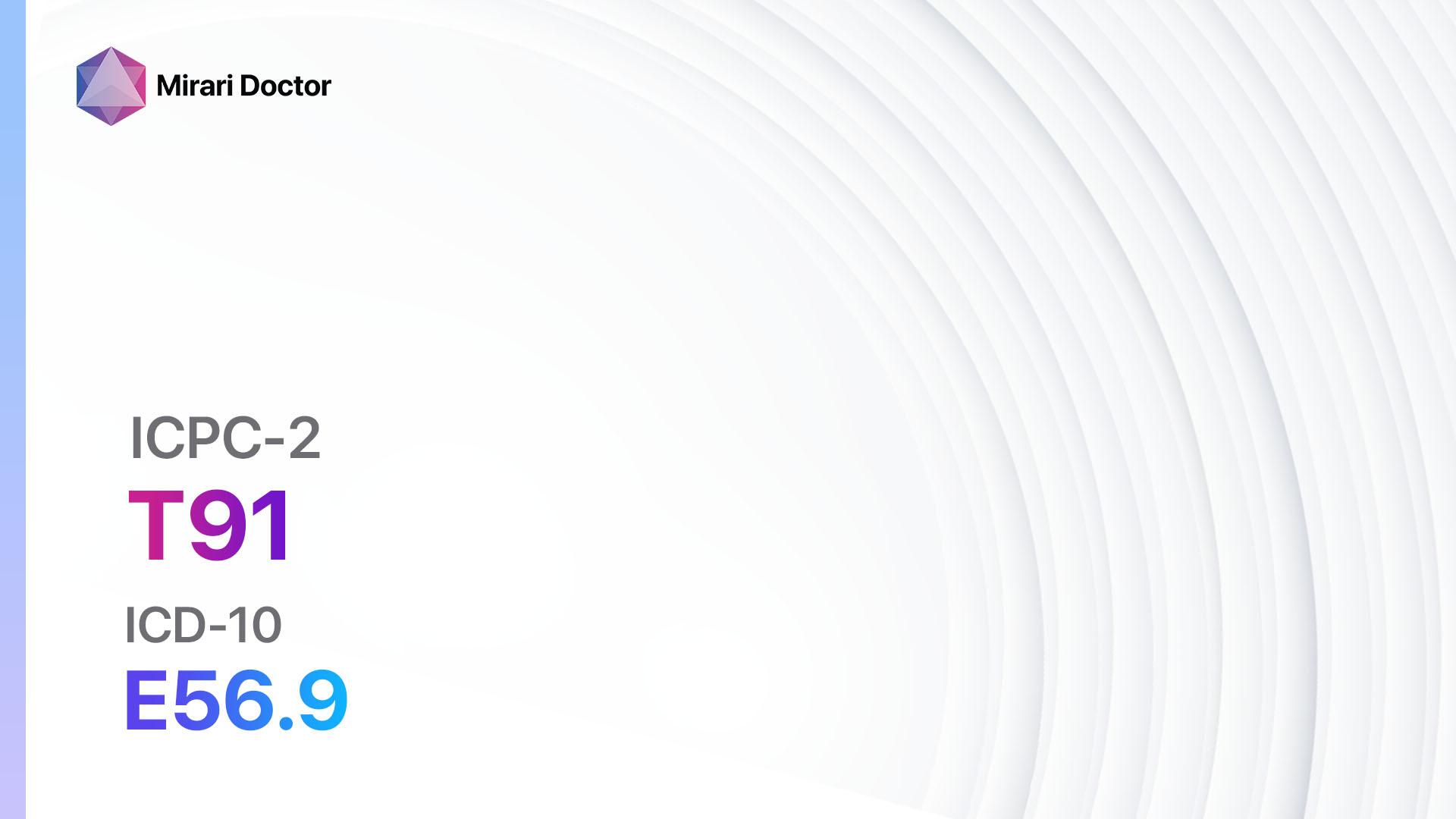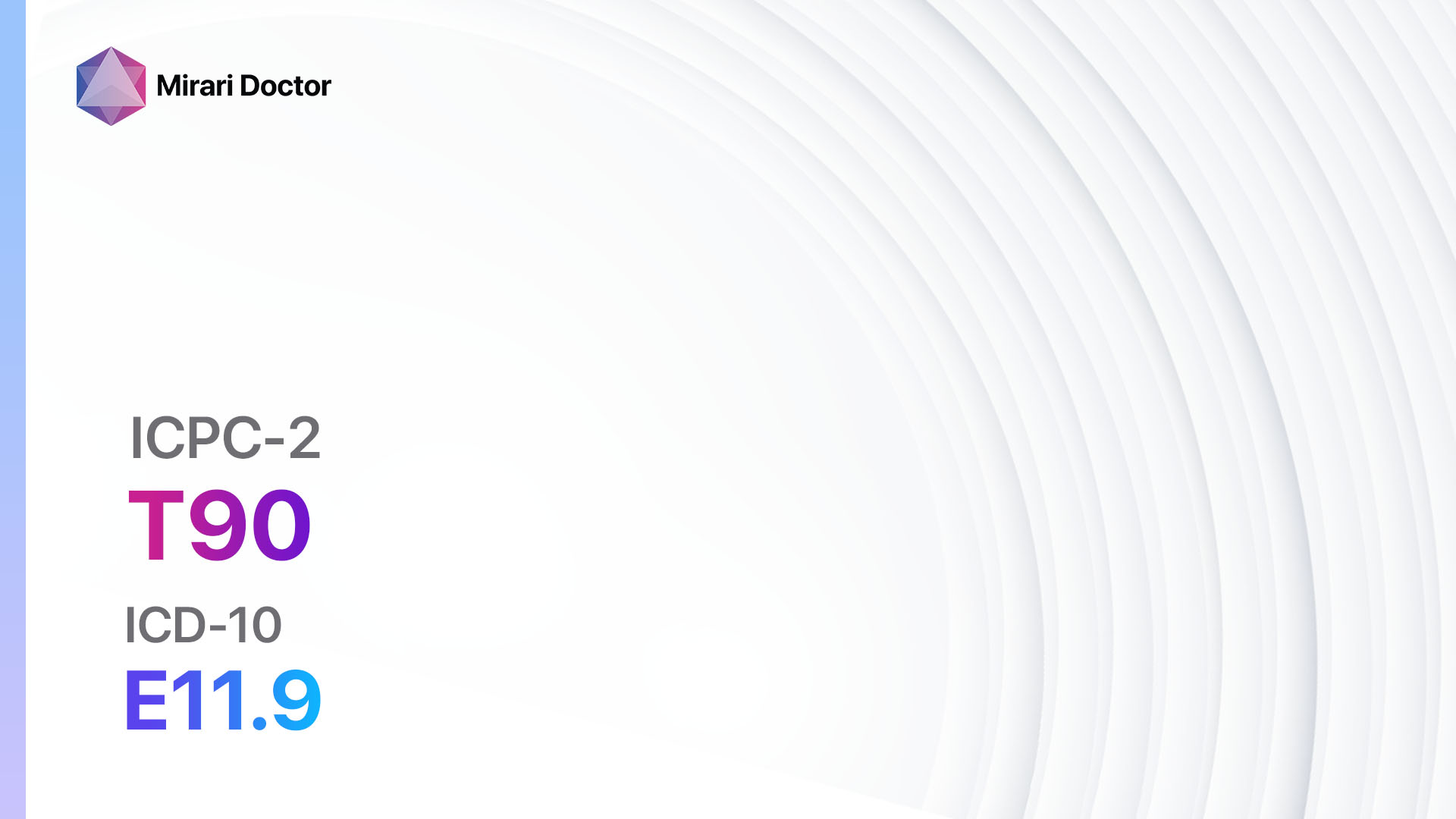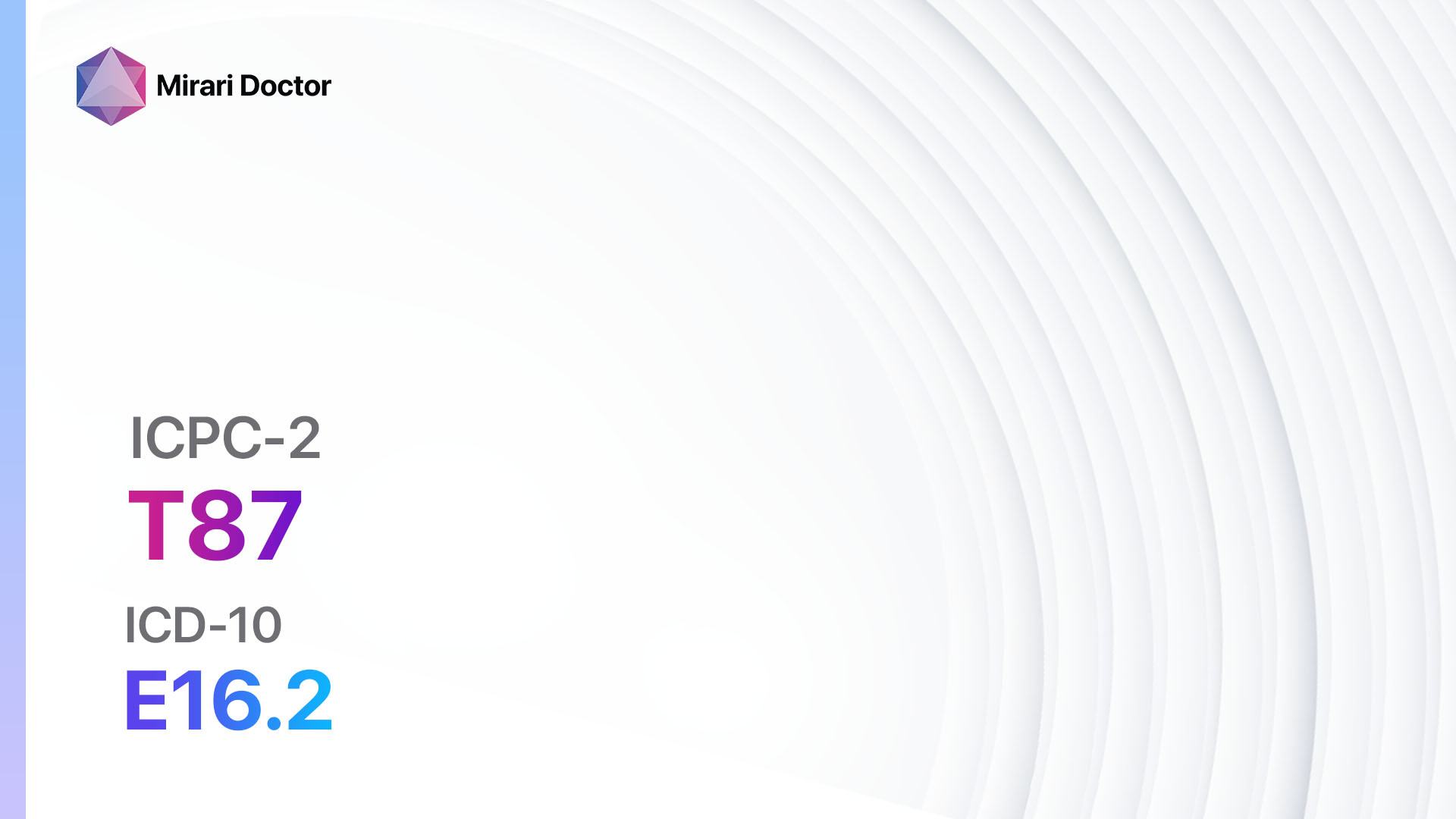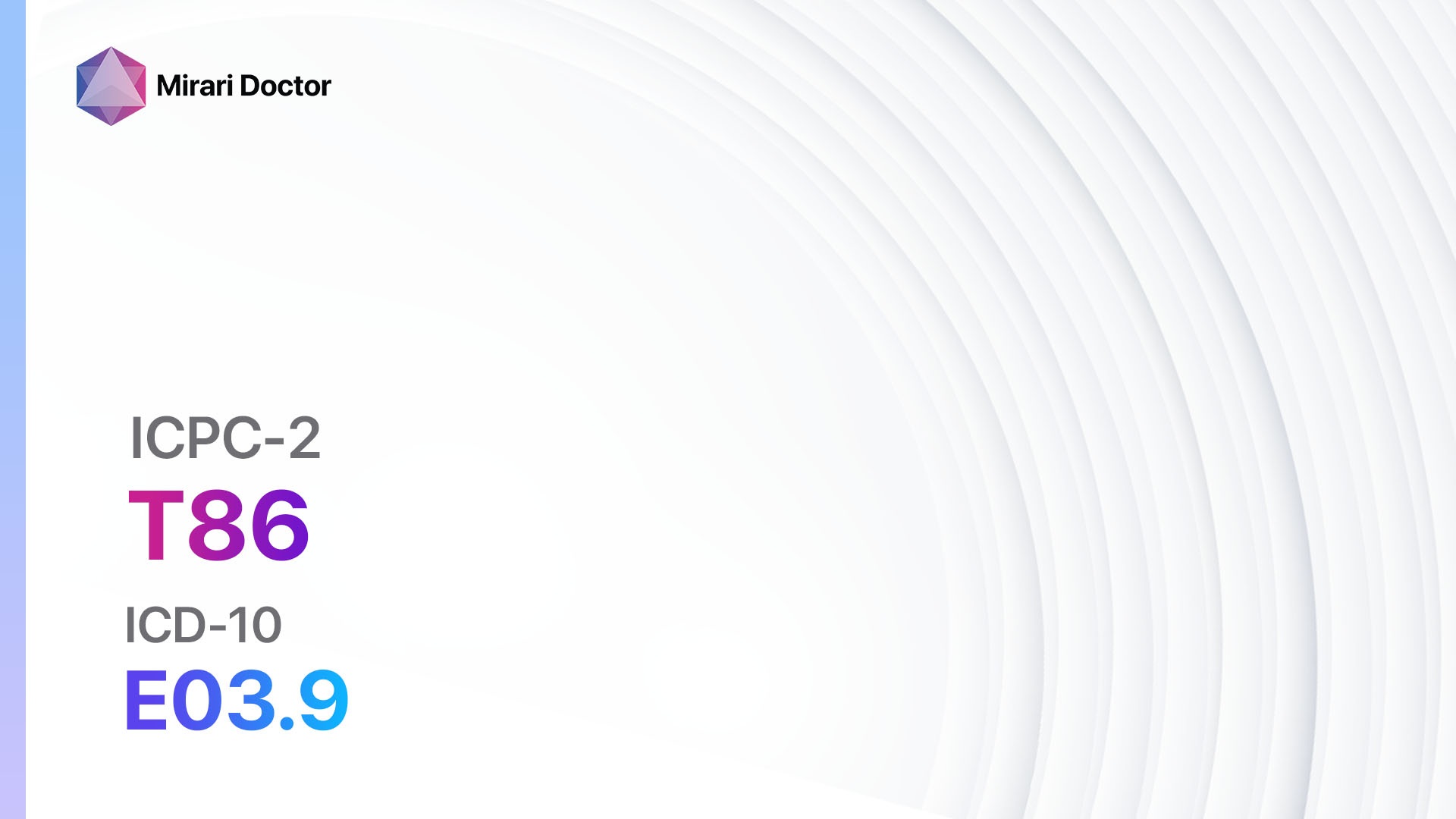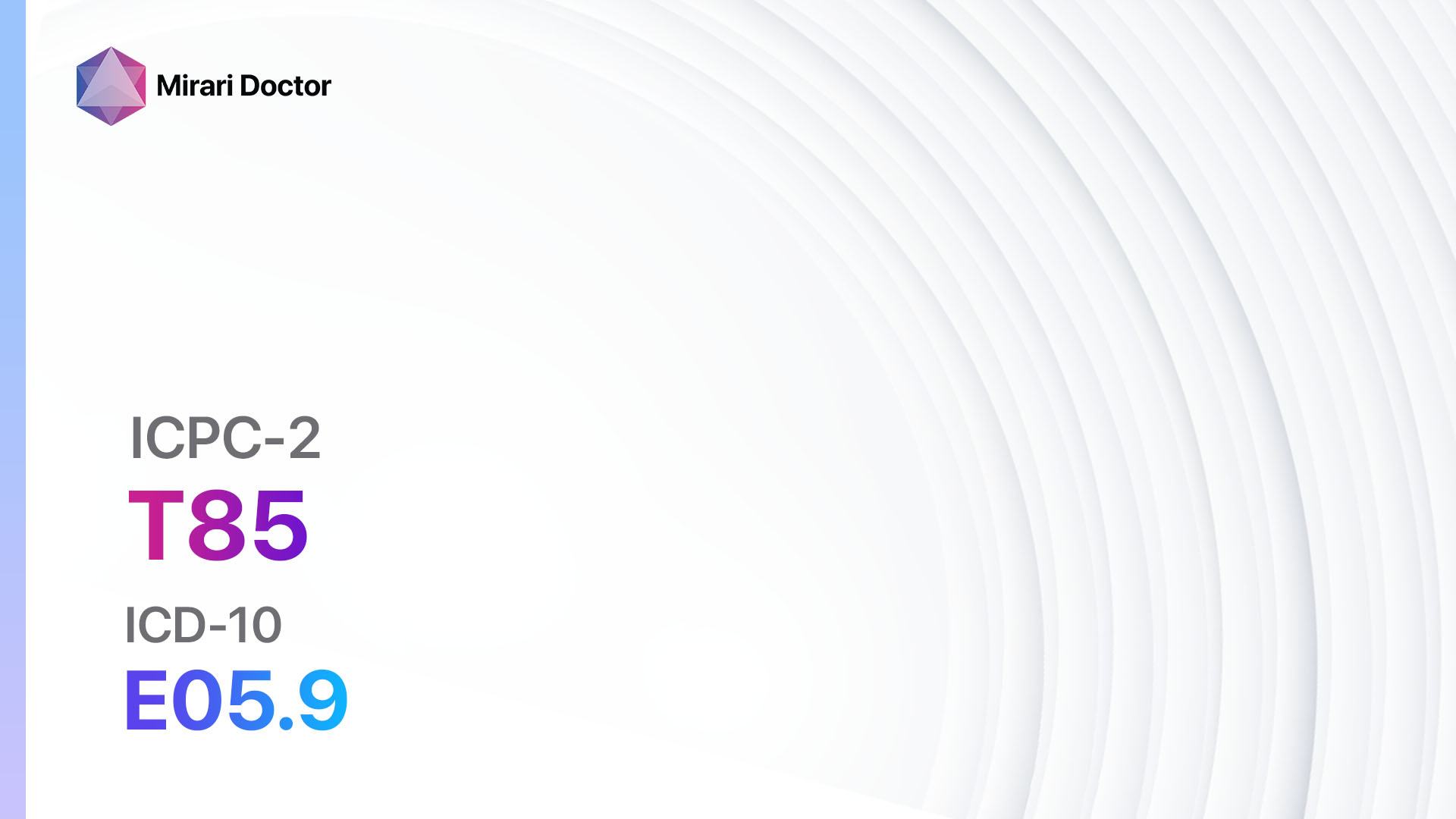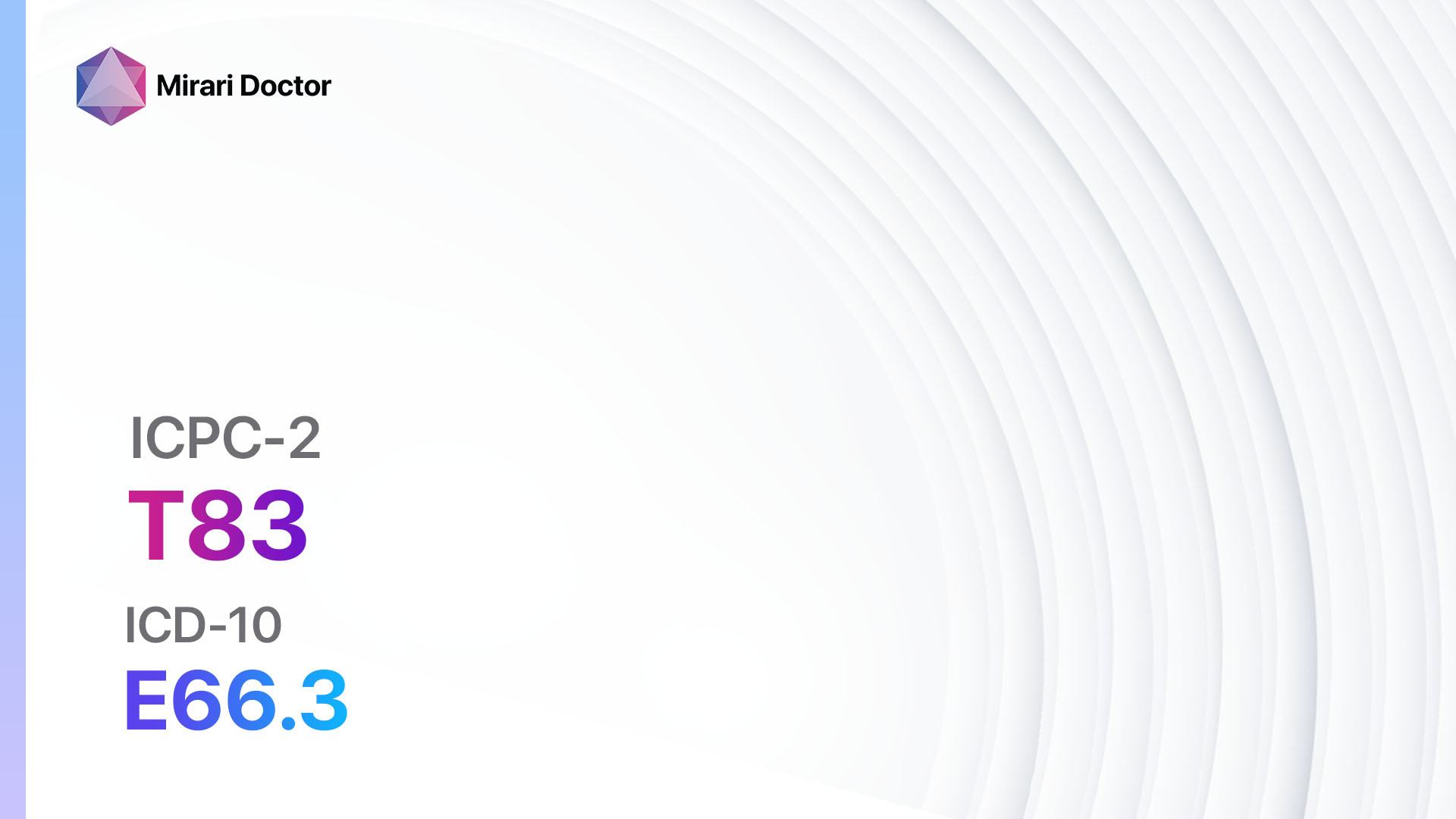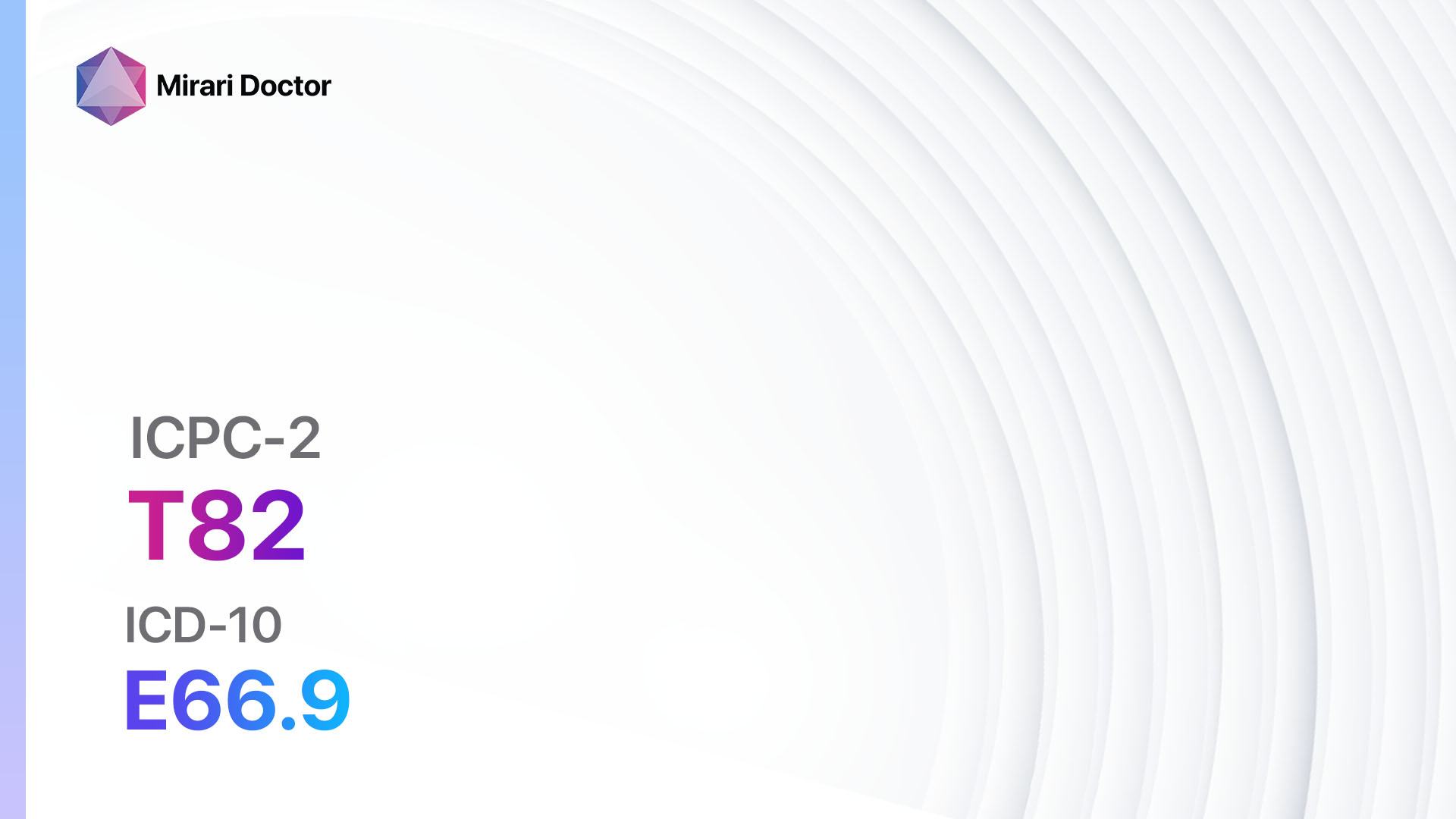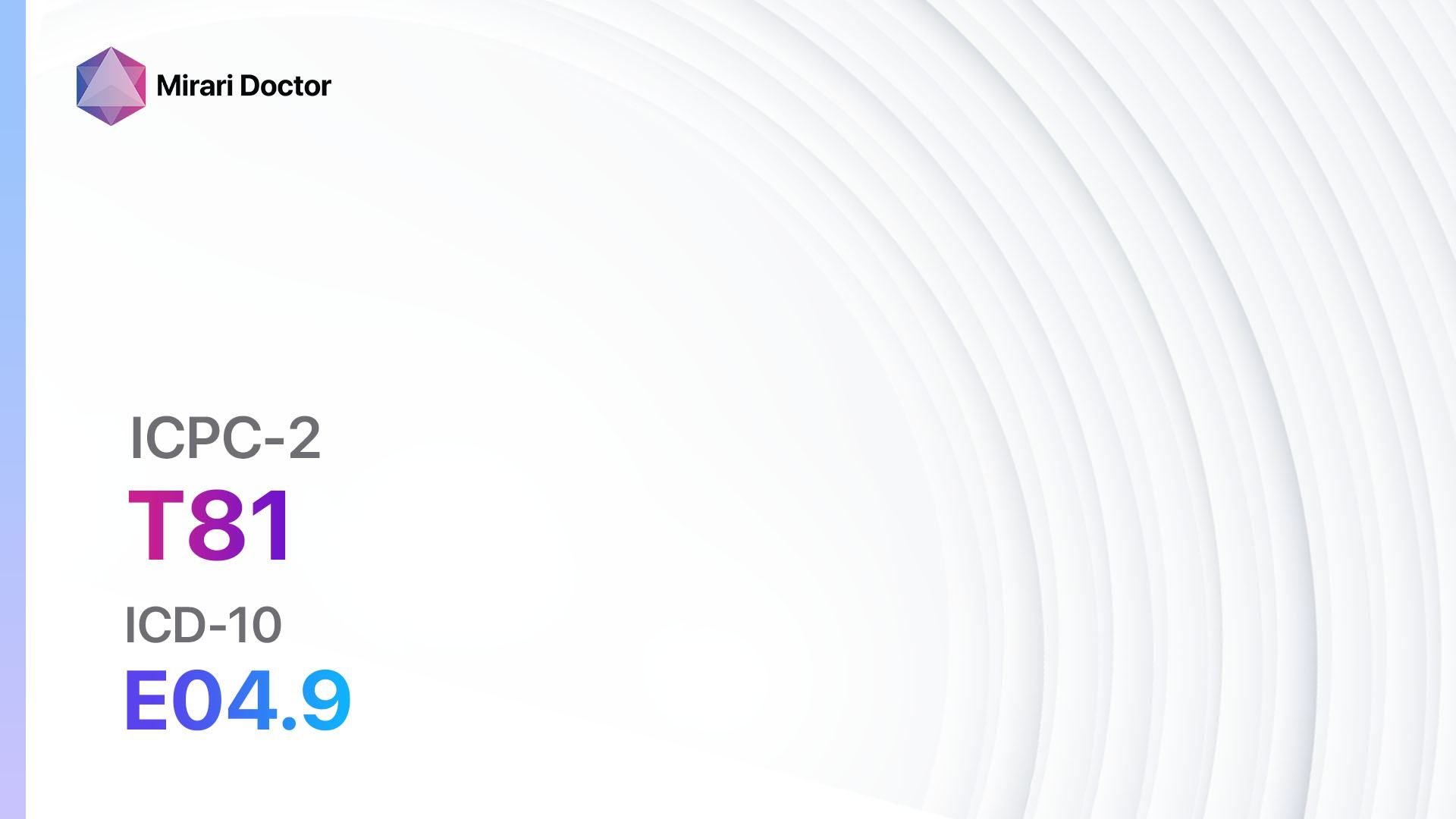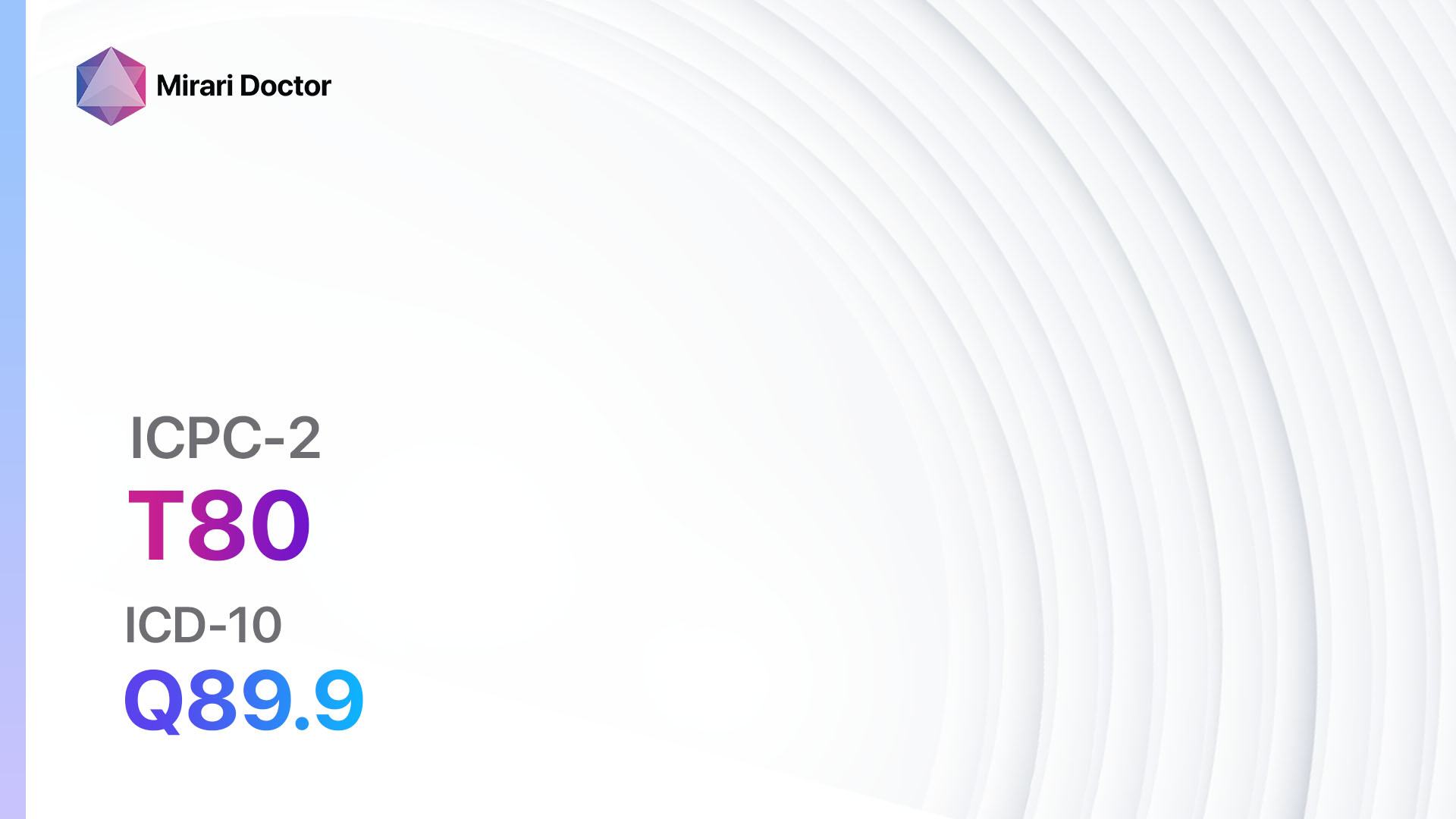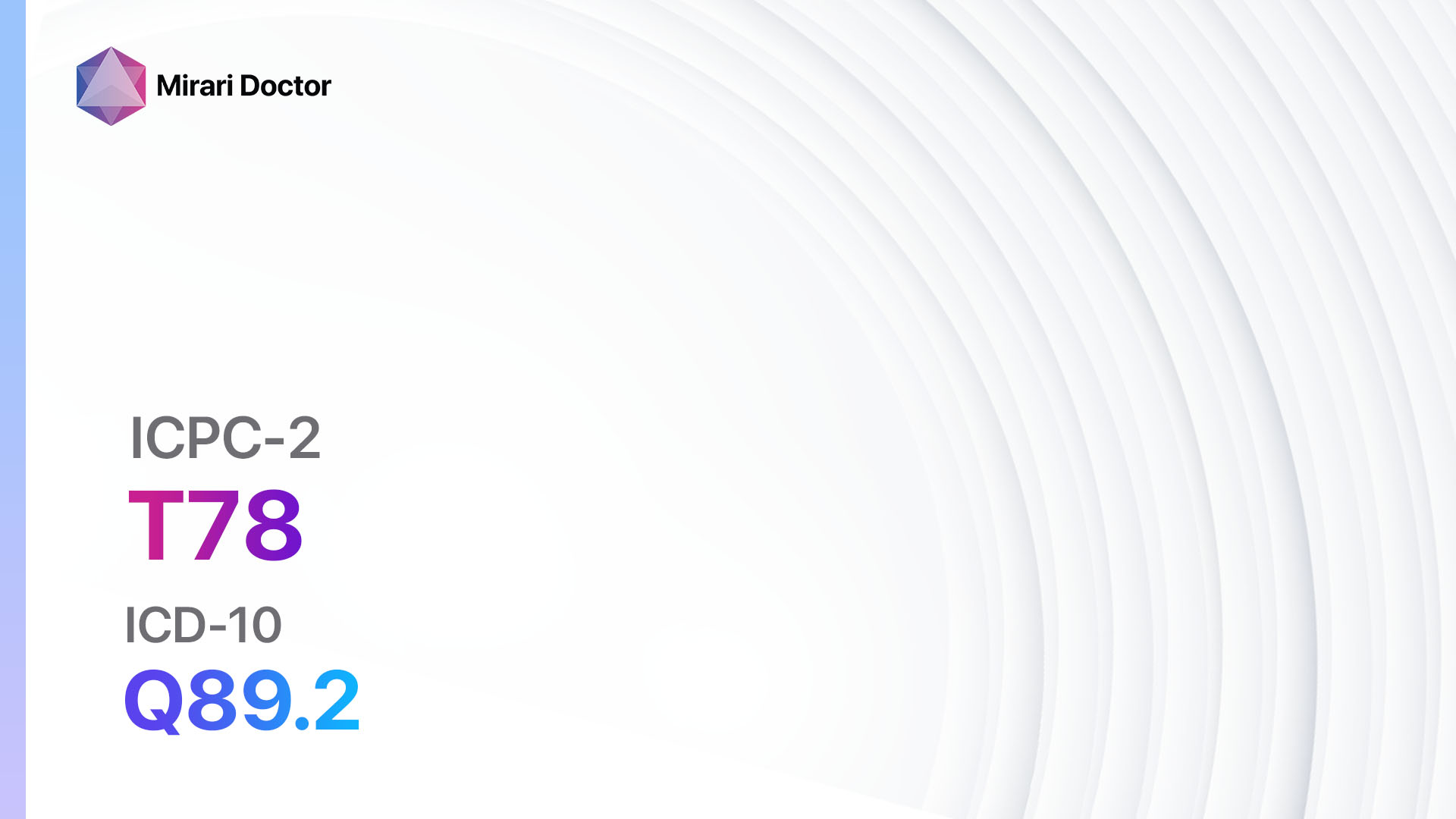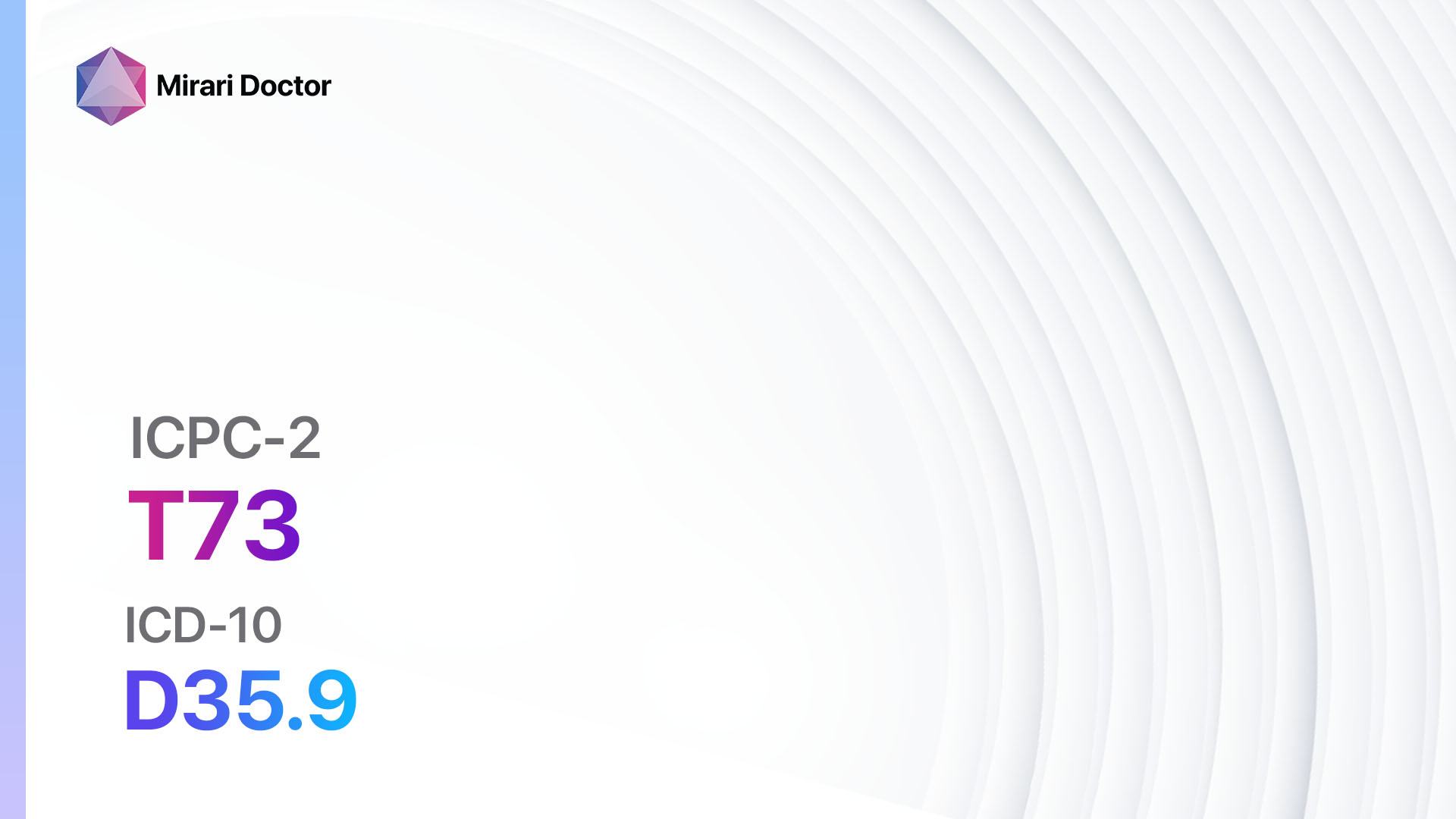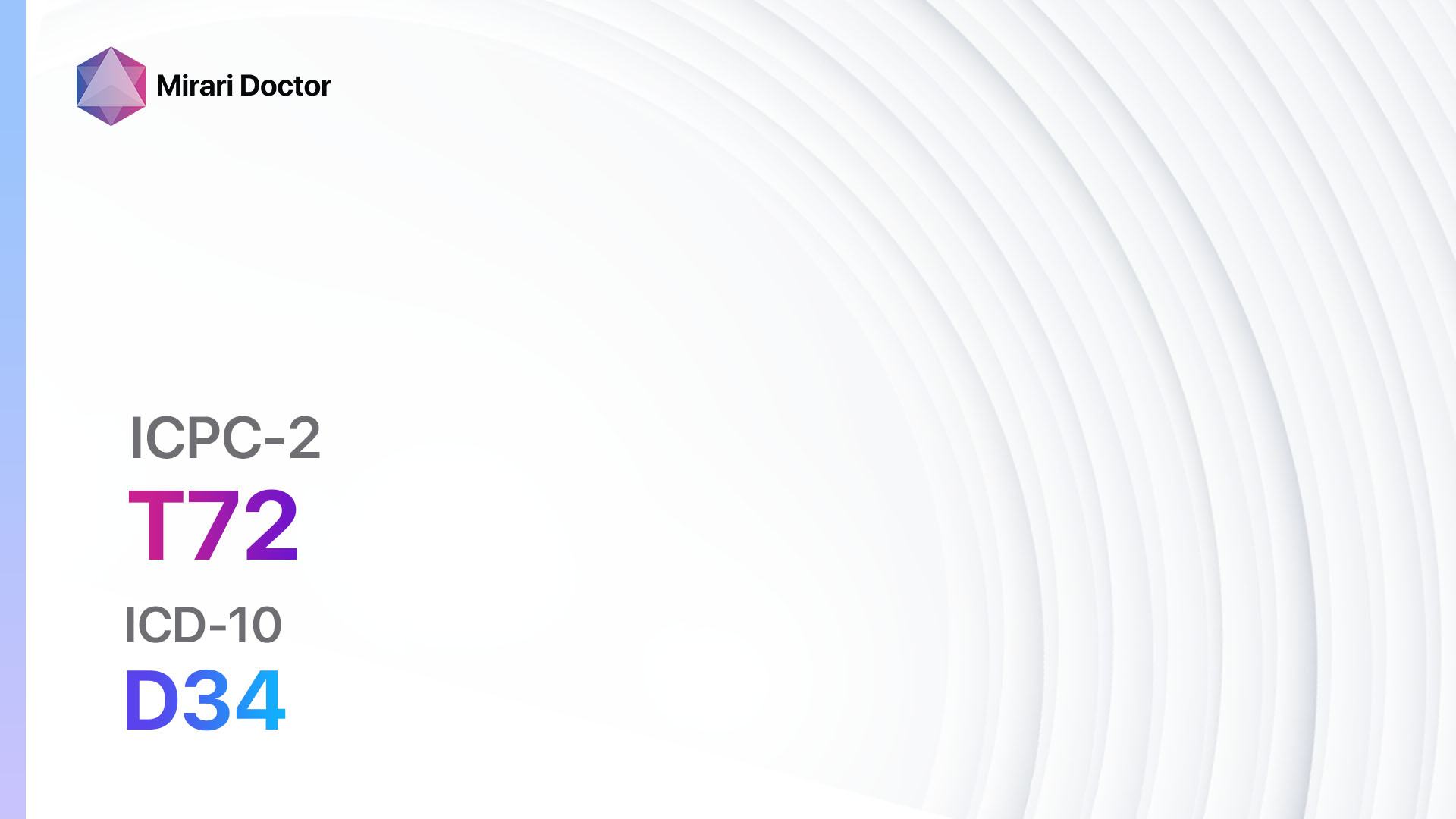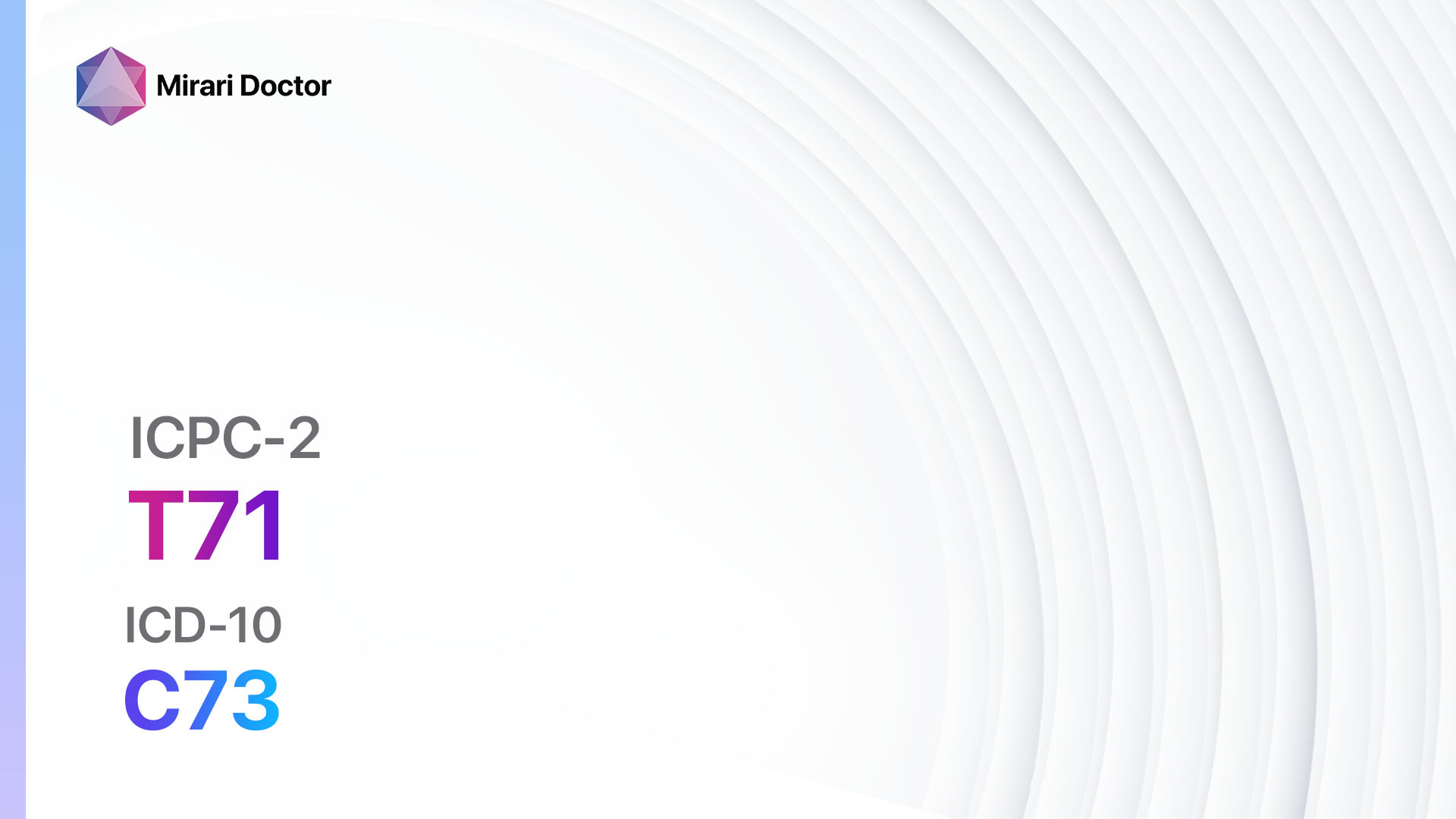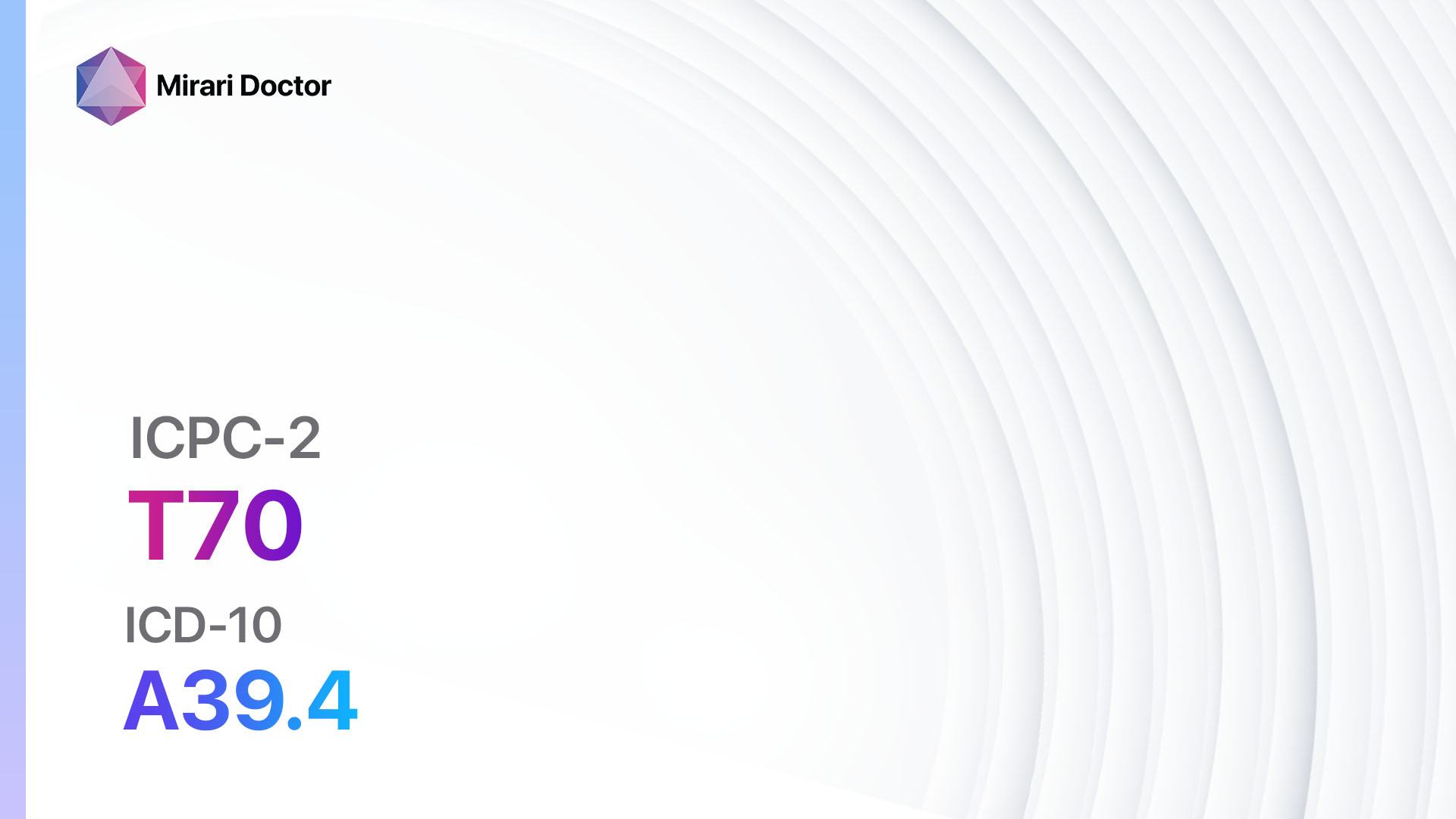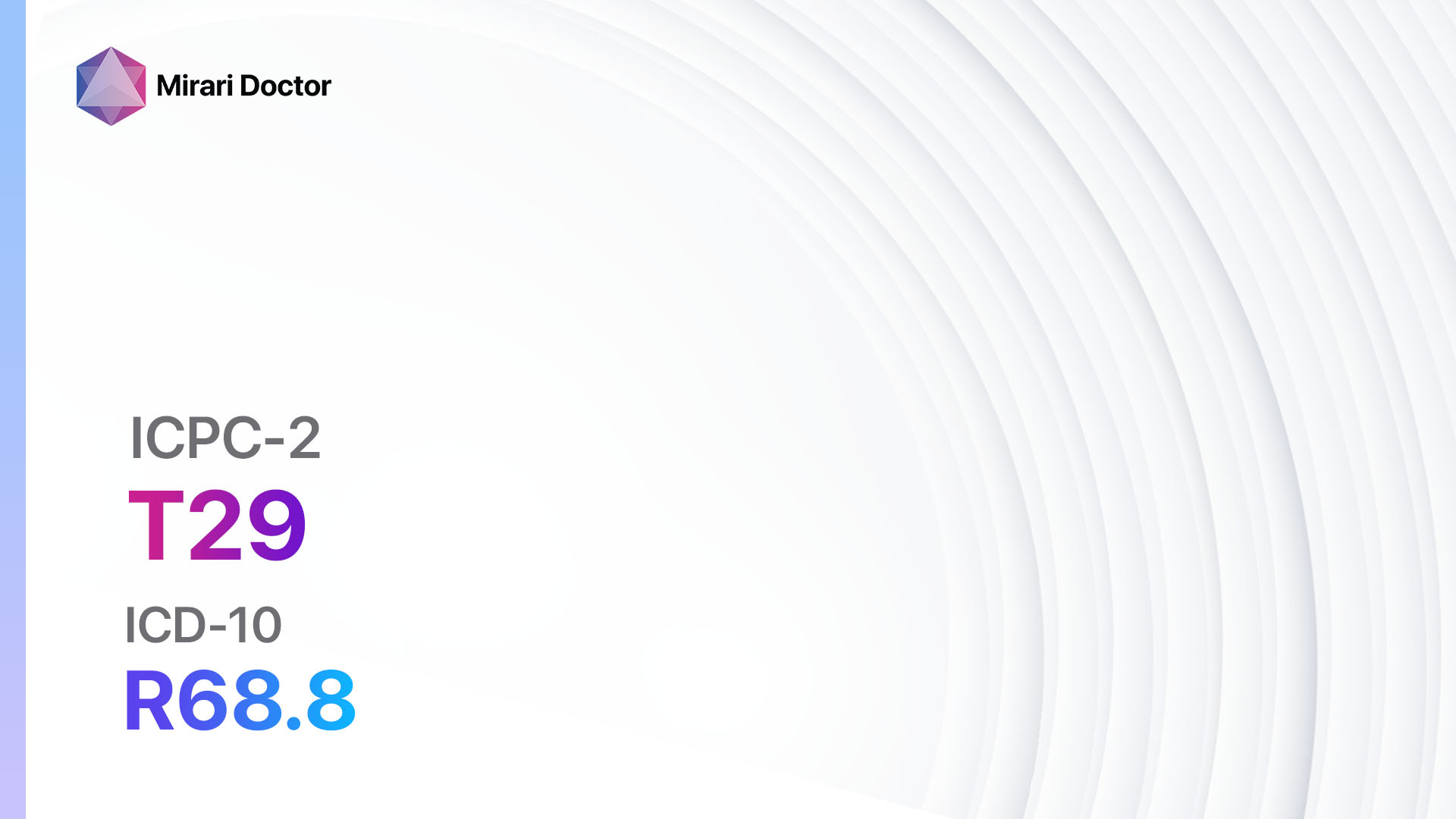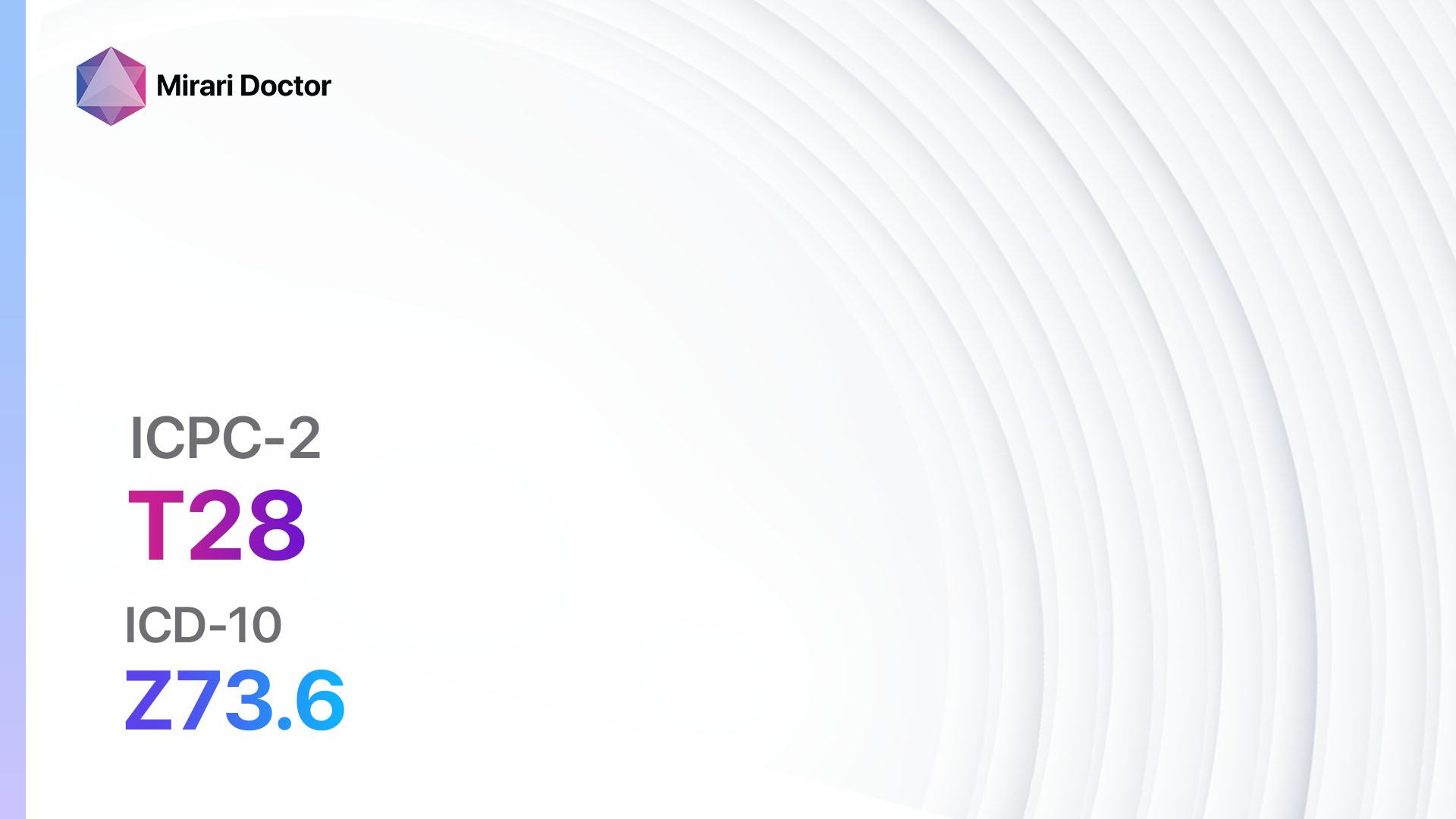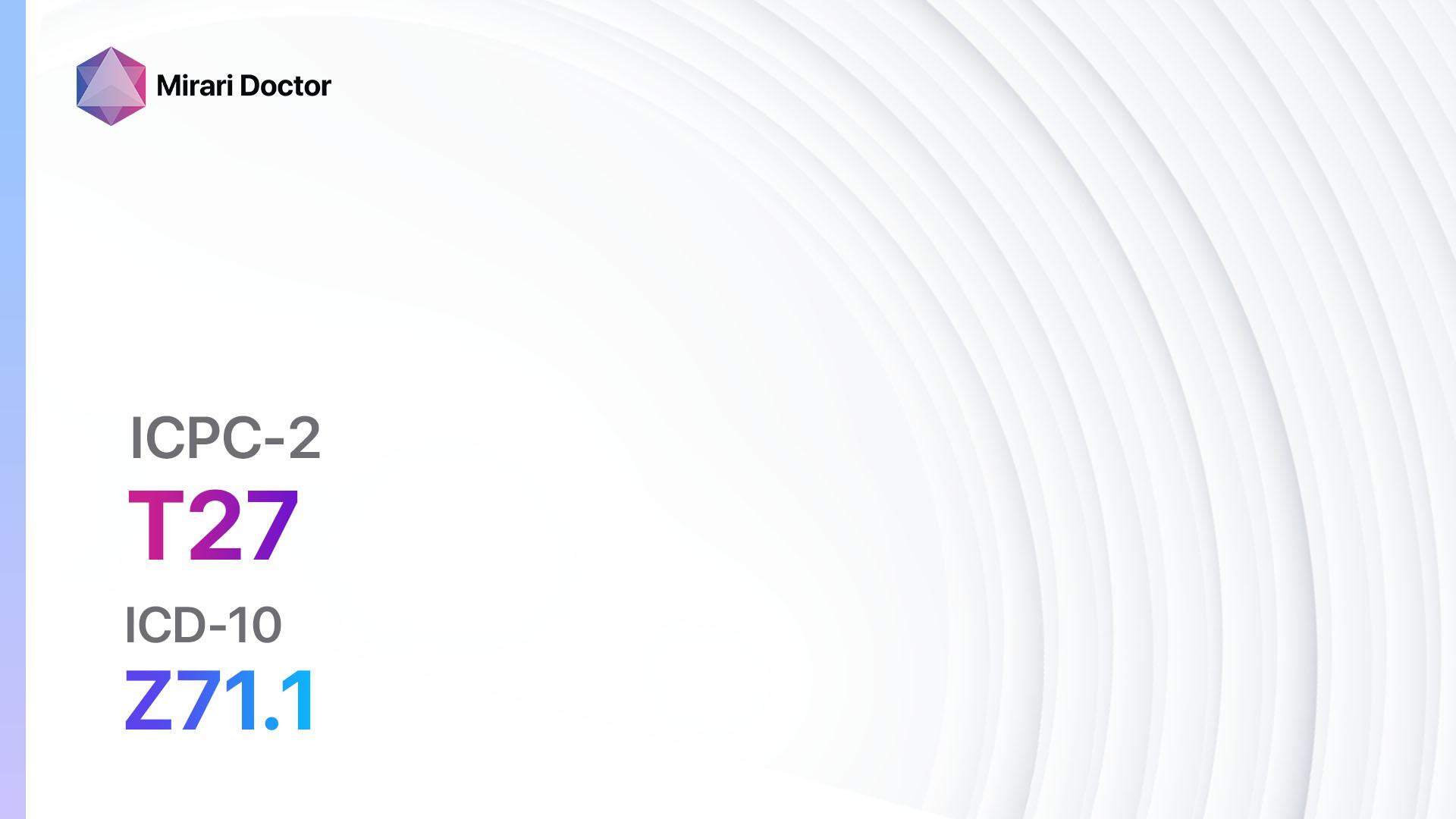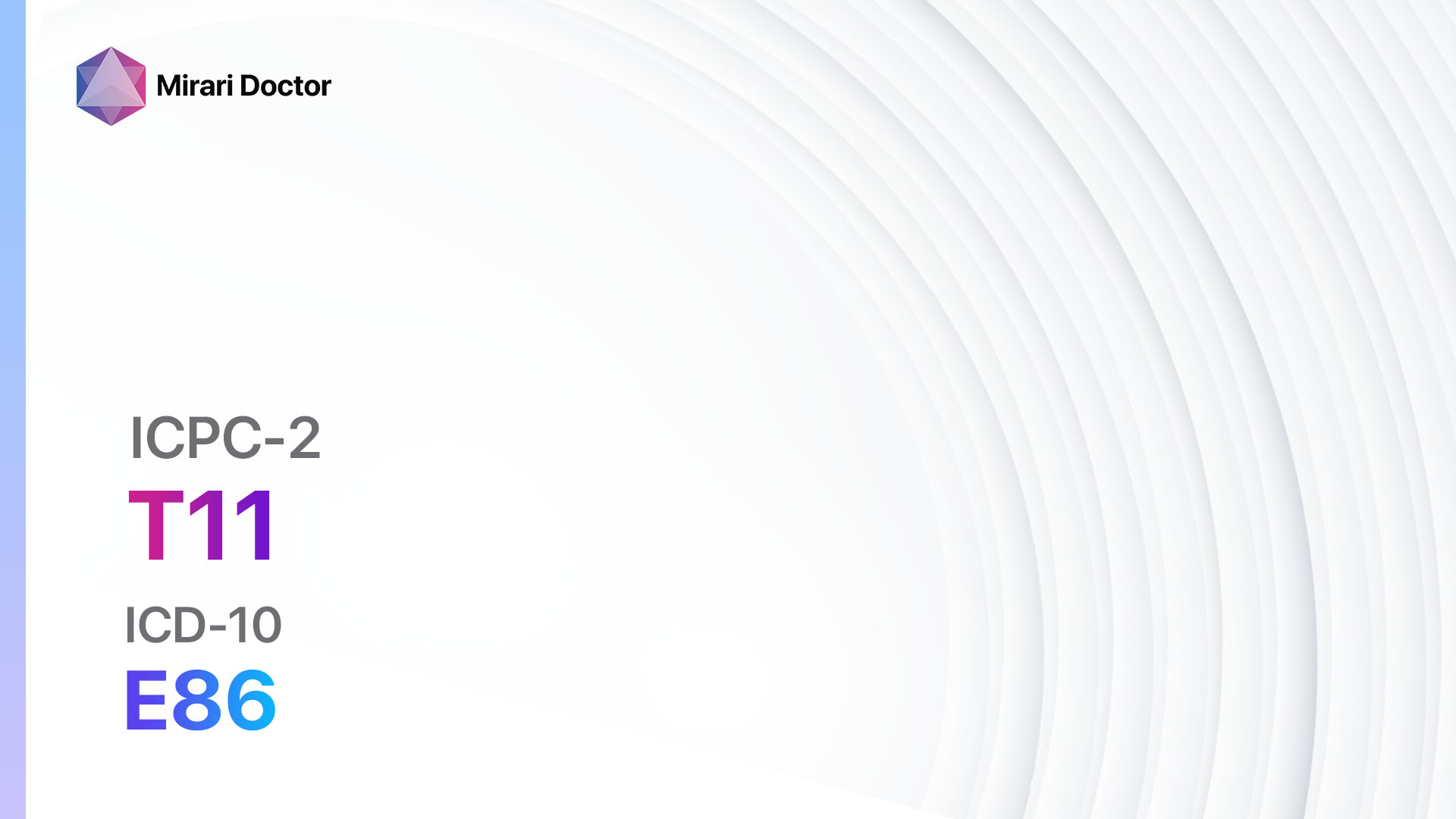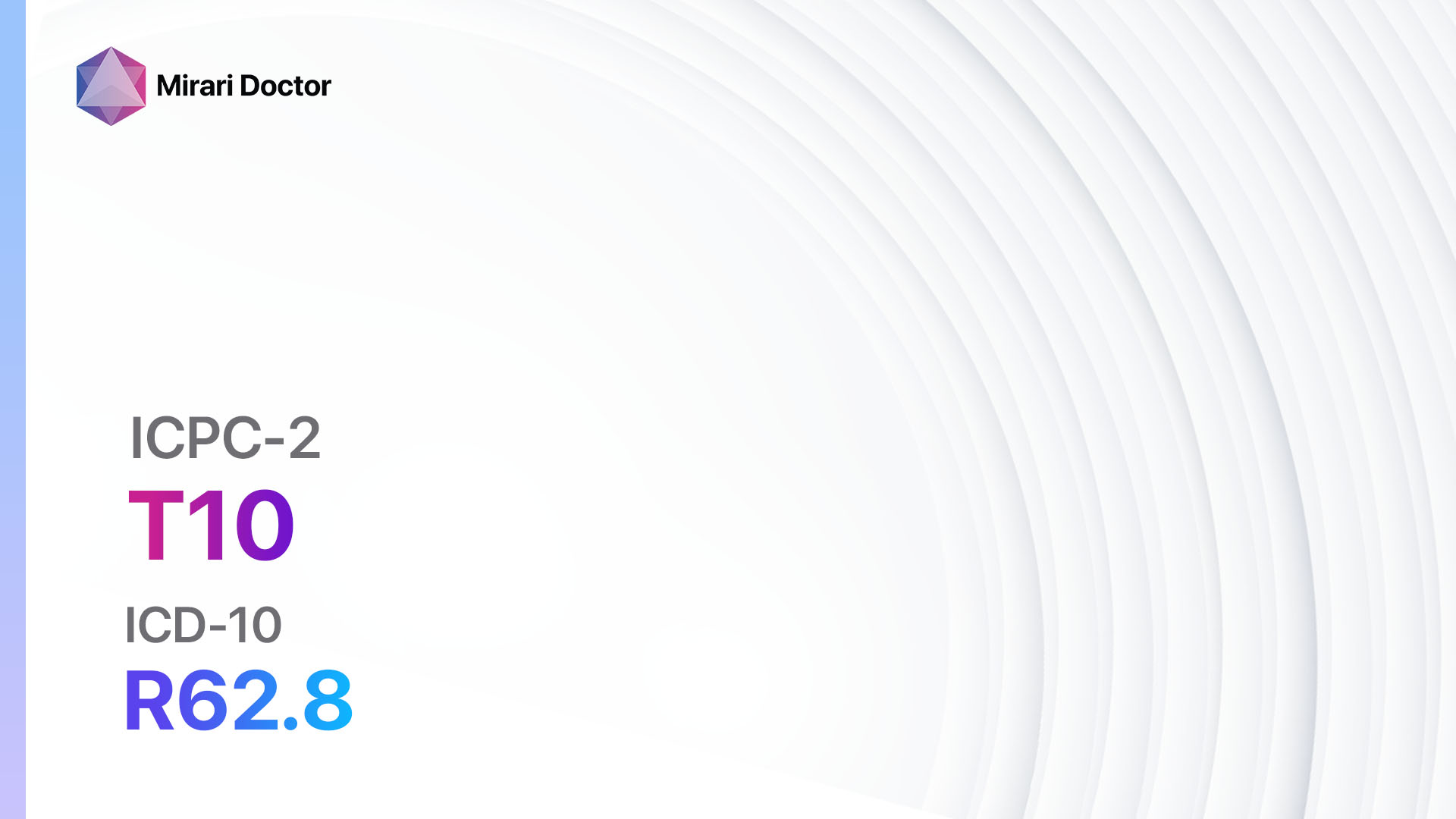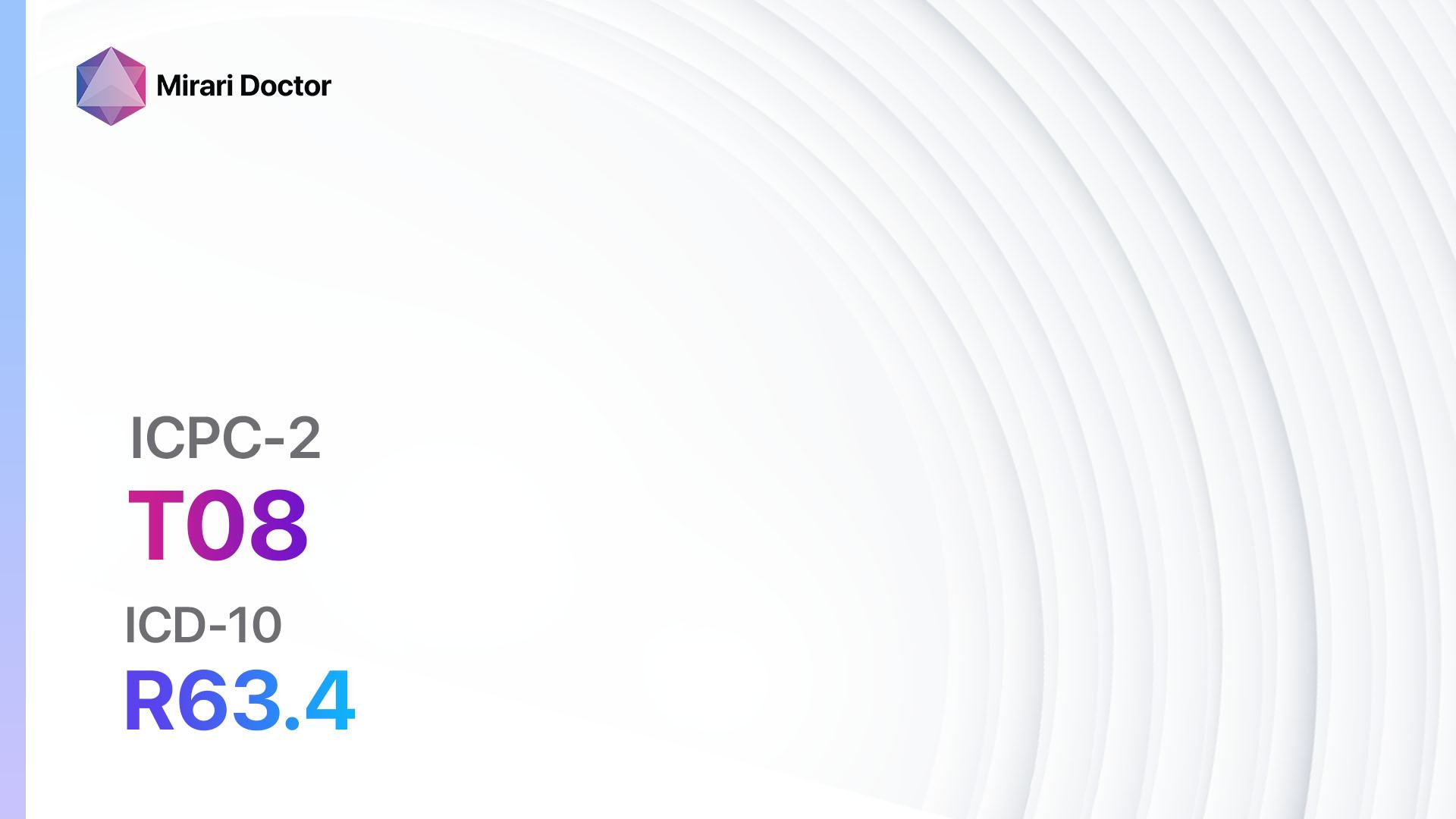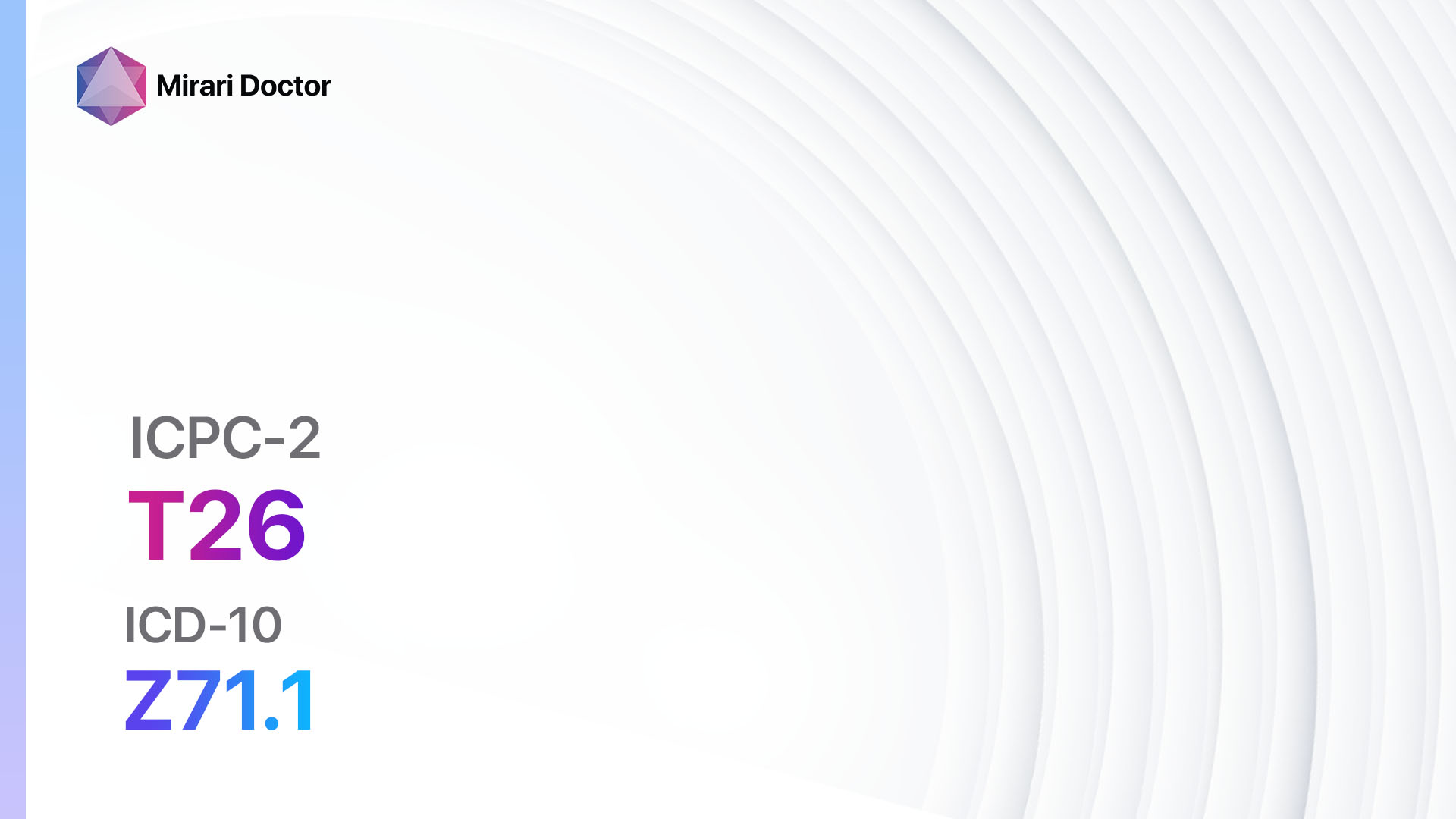
Introduction
Fear of cancer of the endocrine system is a common concern among individuals. This guide aims to provide information on the symptoms, causes, diagnostic steps, possible interventions, and lifestyle changes that can help alleviate this fear.
Codes
- ICPC-2 Code: T26 Fear of cancer of endocrine system
- ICD-10 Code: Z71.1 Person with feared complaint in whom no diagnosis is made
Symptoms
- Fatigue: Feeling tired and lacking energy.[1]
- Unexplained weight loss or gain: Significant changes in weight without any apparent cause.[2]
- Changes in appetite: Increased or decreased appetite.[3]
- Changes in bowel habits: Diarrhea or constipation that persists.[4]
- Changes in menstrual cycle: Irregular periods or changes in menstrual flow.[5]
- Mood changes: Feeling anxious, depressed, or irritable.[1]
- Changes in skin: Skin changes, such as darkening or thickening.[6]
- Changes in sleep patterns: Difficulty sleeping or excessive sleepiness.[1]
- Changes in heart rate: Rapid or irregular heart rate.[7]
- Changes in blood pressure: High or low blood pressure.[7]
Causes
- Genetic factors: Certain genetic mutations can increase the risk of developing endocrine system cancers.[8]
- Environmental factors: Exposure to certain chemicals or radiation may increase the risk.[9]
- Hormonal imbalances: Imbalances in hormone levels can contribute to the development of endocrine system cancers.[10]
- Age: The risk of developing endocrine system cancers increases with age.[8]
- Family history: Having a family history of endocrine system cancers can increase the risk.[8]
Diagnostic Steps
Medical History
- Gather information about the patient’s risk factors, such as family history of endocrine system cancers, exposure to radiation or chemicals, and hormonal imbalances.[8][9]
- Ask about any symptoms the patient is experiencing and their duration.[1]
- Inquire about any previous diagnoses or treatments related to endocrine system cancers.[8]
Physical Examination
- Perform a thorough physical examination, including palpation of the thyroid gland, lymph nodes, and other relevant areas.[10]
- Look for any signs of abnormal growths or masses.[10]
- Check for any physical symptoms associated with endocrine system cancers, such as changes in skin or weight loss/gain.[2][6]
Laboratory Tests
- Thyroid function tests: Measure the levels of thyroid hormones (T3, T4) and thyroid-stimulating hormone (TSH) in the blood.
- Blood tests: Check for any abnormalities in blood cell counts, liver function, kidney function, and hormone levels.
- Tumor marker tests: Measure the levels of specific proteins in the blood that may indicate the presence of endocrine system cancers.
- Genetic testing: Identify any genetic mutations that may increase the risk of developing endocrine system cancers.
Diagnostic Imaging
- Ultrasound: Use high-frequency sound waves to create images of the thyroid gland, adrenal glands, or other areas of concern.
- CT scan: Provide detailed cross-sectional images of the body to identify any abnormal growths or masses.
- MRI: Use magnetic fields and radio waves to produce detailed images of the body’s soft tissues.
- PET scan: Inject a radioactive tracer into the body to visualize areas of increased metabolic activity, which may indicate the presence of cancer.
Other Tests
- Fine-needle aspiration biopsy: Extract a small sample of cells from a suspicious growth or mass for further examination under a microscope.
- Thyroid scan: Administer a small amount of radioactive iodine to visualize the thyroid gland and detect any abnormalities.
- Bone scan: Use a radioactive tracer to identify any areas of abnormal bone activity that may indicate the spread of cancer.
- Endoscopy: Insert a flexible tube with a camera into the body to visualize the gastrointestinal tract or other areas of concern.
Follow-up and Patient Education
- Schedule regular follow-up appointments to monitor any changes in symptoms or test results.
- Provide education on the signs and symptoms of endocrine system cancers and when to seek medical attention.
- Offer emotional support and resources for coping with the fear of cancer.
Possible Interventions
Traditional Interventions
Medications:
Top 5 drugs for endocrine system cancers:
- Levothyroxine (for thyroid cancer):
- Cost: $10-$30/month.
- Contraindications: Hypersensitivity to levothyroxine.
- Side effects: Increased appetite, weight loss, insomnia.
- Severe side effects: Chest pain, rapid or irregular heartbeat.
- Drug interactions: Antacids, calcium supplements, iron supplements.
- Warning: Regular monitoring of thyroid hormone levels required.
- Somatostatin analogs (e.g., Octreotide, Lanreotide):
- Cost: $1,000-$5,000/month.
- Contraindications: Hypersensitivity to somatostatin analogs.
- Side effects: Nausea, diarrhea, abdominal pain.
- Severe side effects: Gallstones, pancreatitis.
- Drug interactions: Cyclosporine, insulin.
- Warning: Regular monitoring of blood glucose levels required.
- Tyrosine kinase inhibitors (e.g., Sorafenib, Lenvatinib):
- Cost: $5,000-$10,000/month.
- Contraindications: Hypersensitivity to tyrosine kinase inhibitors.
- Side effects: Fatigue, diarrhea, hand-foot syndrome.
- Severe side effects: High blood pressure, liver problems.
- Drug interactions: CYP3A4 inhibitors, CYP3A4 inducers.
- Warning: Regular monitoring of liver function required.
- Chemotherapy (e.g., Doxorubicin, Cisplatin):
- Cost: $1,000-$5,000/month.
- Contraindications: Severe bone marrow suppression, severe kidney or liver dysfunction.
- Side effects: Nausea, vomiting, hair loss.
- Severe side effects: Bone marrow suppression, kidney damage.
- Drug interactions: Other chemotherapy drugs, radiation therapy.
- Warning: Regular monitoring of blood cell counts required.
- Radiation therapy:
- Cost: $10,000-$50,000/course.
- Contraindications: Pregnancy, severe bone marrow suppression.
- Side effects: Fatigue, skin changes, hair loss.
- Severe side effects: Radiation-induced cancers, organ damage.
- Drug interactions: None.
- Warning: Regular monitoring of treatment response required.
Alternative Drugs:
- Immunotherapy (e.g., Pembrolizumab, Nivolumab): Stimulate the immune system to recognize and attack cancer cells. Cost: $10,000-$20,000/month.
- Targeted therapy (e.g., Vandetanib, Cabozantinib): Block specific molecules involved in cancer growth. Cost: $5,000-$10,000/month.
- Chemoradiotherapy: Combine chemotherapy and radiation therapy to enhance treatment effectiveness. Cost: $20,000-$50,000/course.
Surgical Procedures:
- Thyroidectomy: Surgical removal of the thyroid gland. Cost: $10,000-$30,000.
- Adrenalectomy: Surgical removal of the adrenal glands. Cost: $15,000-$40,000.
- Pancreatectomy: Surgical removal of the pancreas. Cost: $20,000-$50,000.
- Lymph node dissection: Surgical removal of lymph nodes to assess cancer spread. Cost: $5,000-$15,000.
- Metastasectomy: Surgical removal of metastatic tumors. Cost: $10,000-$30,000.
Alternative Interventions
- Acupuncture: May help alleviate anxiety and improve overall well-being. Cost: $60-$120 per session.
- Meditation: Can reduce stress and promote relaxation. Cost: Free or minimal cost.
- Yoga: Combines physical postures, breathing exercises, and meditation to improve physical and mental health. Cost: $10-$20 per class.
- Massage therapy: Promotes relaxation and reduces muscle tension. Cost: $50-$100 per session.
- Herbal supplements: Some herbs, such as ashwagandha and turmeric, may have potential benefits for cancer prevention. Cost: Varies depending on the specific supplement.
Lifestyle Interventions
- Healthy diet: Emphasize a diet rich in fruits, vegetables, whole grains, and lean proteins. Cost: Varies depending on food choices.
- Regular exercise: Engage in moderate-intensity exercise for at least 150 minutes per week. Cost: Free or minimal cost.
- Stress management: Practice stress-reducing techniques, such as deep breathing exercises or mindfulness meditation. Cost: Free or minimal cost.
- Smoking cessation: Quit smoking to reduce the risk of developing endocrine system cancers. Cost: Varies depending on the chosen method (e.g., nicotine replacement therapy, medications, counseling).
- Limit alcohol consumption: Drink alcohol in moderation or avoid it altogether. Cost: Varies depending on alcohol consumption habits.
It is important to note that the cost ranges provided are approximate and may vary depending on the location and availability of the interventions. It is recommended to consult with a healthcare professional for personalized advice and guidance.
Mirari Cold Plasma Alternative Intervention
Understanding Mirari Cold Plasma
- Safe and Non-Invasive Treatment: Mirari Cold Plasma is a safe and non-invasive treatment option for various skin conditions. It does not require incisions, minimizing the risk of scarring, bleeding, or tissue damage.
- Efficient Extraction of Foreign Bodies: Mirari Cold Plasma facilitates the removal of foreign bodies from the skin by degrading and dissociating organic matter, allowing easier access and extraction.
- Pain Reduction and Comfort: Mirari Cold Plasma has a local analgesic effect, providing pain relief during the treatment, making it more comfortable for the patient.
- Reduced Risk of Infection: Mirari Cold Plasma has antimicrobial properties, effectively killing bacteria and reducing the risk of infection.
- Accelerated Healing and Minimal Scarring: Mirari Cold Plasma stimulates wound healing and tissue regeneration, reducing healing time and minimizing the formation of scars.
Mirari Cold Plasma Prescription
Video instructions for using Mirari Cold Plasma Device – T26 Fear of cancer of endocrine system (ICD-10:Z71.1)
| Mild | Moderate | Severe |
| Mode setting: 7 (Immunotherapy) Location: 1 (Sacrum) Morning: 15 minutes, Evening: 15 minutes |
Mode setting: 7 (Immunotherapy) Location: 1 (Sacrum) Morning: 30 minutes, Lunch: 30 minutes, Evening: 30 minutes |
Mode setting: 7 (Immunotherapy) Location: 1 (Sacrum) Morning: 30 minutes, Lunch: 30 minutes, Evening: 30 minutes |
| Mode setting: 7 (Immunotherapy) Location: 4 (Heart, Bile & Pancreas) Morning: 15 minutes, Evening: 15 minutes |
Mode setting: 7 (Immunotherapy) Location: 4 (Heart, Bile & Pancreas) Morning: 30 minutes, Lunch: 30 minutes, Evening: 30 minutes |
Mode setting: 7 (Immunotherapy) Location: 4 (Heart, Bile & Pancreas) Morning: 30 minutes, Lunch: 30 minutes, Evening: 30 minutes |
| Mode setting: 7 (Immunotherapy) Location: 6 (Throat, Lymphatic & Thyroid) Morning: 15 minutes, Evening: 15 minutes |
Mode setting: 7 (Immunotherapy) Location: 6 (Throat, Lymphatic & Thyroid) Morning: 30 minutes, Lunch: 30 minutes, Evening: 30 minutes |
Mode setting: 7 (Immunotherapy) Location: 6 (Throat, Lymphatic & Thyroid) Morning: 30 minutes, Lunch: 30 minutes, Evening: 30 minutes |
| Total Morning: 45 minutes approx. $7.50 USD, Evening: 45 minutes approx. $7.50 USD |
Total Morning: 90 minutes approx. $15 USD, Lunch: 90 minutes approx. $15 USD, Evening: 90 minutes approx. $15 USD |
Total Morning: 90 minutes approx. $15 USD, Lunch: 90 minutes approx. $15 USD, Evening: 90 minutes approx. $15 USD |
| Usual treatment for 7-60 days approx. $105 USD – $900 USD | Usual treatment for 6-8 weeks approx. $1,890 USD – $2,520 USD |
Usual treatment for 3-6 months approx. $4,050 USD – $8,100 USD
|
 |
|
Use the Mirari Cold Plasma device to treat Fear of cancer of endocrine system effectively.
WARNING: MIRARI COLD PLASMA IS DESIGNED FOR THE HUMAN BODY WITHOUT ANY ARTIFICIAL OR THIRD PARTY PRODUCTS. USE OF OTHER PRODUCTS IN COMBINATION WITH MIRARI COLD PLASMA MAY CAUSE UNPREDICTABLE EFFECTS, HARM OR INJURY. PLEASE CONSULT A MEDICAL PROFESSIONAL BEFORE COMBINING ANY OTHER PRODUCTS WITH USE OF MIRARI.
Step 1: Cleanse the Skin
- Start by cleaning the affected area of the skin with a gentle cleanser or mild soap and water. Gently pat the area dry with a clean towel.
Step 2: Prepare the Mirari Cold Plasma device
- Ensure that the Mirari Cold Plasma device is fully charged or has fresh batteries as per the manufacturer’s instructions. Make sure the device is clean and in good working condition.
- Switch on the Mirari device using the power button or by following the specific instructions provided with the device.
- Some Mirari devices may have adjustable settings for intensity or treatment duration. Follow the manufacturer’s instructions to select the appropriate settings based on your needs and the recommended guidelines.
Step 3: Apply the Device
- Place the Mirari device in direct contact with the affected area of the skin. Gently glide or hold the device over the skin surface, ensuring even coverage of the area experiencing.
- Slowly move the Mirari device in a circular motion or follow a specific pattern as indicated in the user manual. This helps ensure thorough treatment coverage.
Step 4: Monitor and Assess:
- Keep track of your progress and evaluate the effectiveness of the Mirari device in managing your Fear of cancer of endocrine system. If you have any concerns or notice any adverse reactions, consult with your health care professional.
Note
This guide is for informational purposes only and should not replace the advice of a medical professional. Always consult with your healthcare provider or a qualified medical professional for personal advice, diagnosis, or treatment. Do not solely rely on the information presented here for decisions about your health. Use of this information is at your own risk. The authors of this guide, nor any associated entities or platforms, are not responsible for any potential adverse effects or outcomes based on the content.
Mirari Cold Plasma System Disclaimer
- Purpose: The Mirari Cold Plasma System is a Class 2 medical device designed for use by trained healthcare professionals. It is registered for use in Thailand and Vietnam. It is not intended for use outside of these locations.
- Informational Use: The content and information provided with the device are for educational and informational purposes only. They are not a substitute for professional medical advice or care.
- Variable Outcomes: While the device is approved for specific uses, individual outcomes can differ. We do not assert or guarantee specific medical outcomes.
- Consultation: Prior to utilizing the device or making decisions based on its content, it is essential to consult with a Certified Mirari Tele-Therapist and your medical healthcare provider regarding specific protocols.
- Liability: By using this device, users are acknowledging and accepting all potential risks. Neither the manufacturer nor the distributor will be held accountable for any adverse reactions, injuries, or damages stemming from its use.
- Geographical Availability: This device has received approval for designated purposes by the Thai and Vietnam FDA. As of now, outside of Thailand and Vietnam, the Mirari Cold Plasma System is not available for purchase or use.
References
- American Cancer Society. (2021). Signs and Symptoms of Cancer.
- National Cancer Institute. (2021). Unexplained Weight Loss.
- Mayo Clinic. (2021). Cancer symptoms: When should you worry?
- American Society of Clinical Oncology. (2021). Cancer.Net: Endocrine Tumors.
- Endocrine Society. (2021). Hormone Health Network: Endocrine-Related Cancers.
- American Academy of Dermatology. (2021). Skin changes that could be a sign of internal disease.
- American Heart Association. (2021). How cancer treatments can affect your heart.
- National Cancer Institute. (2021). Genetics of Endocrine and Neuroendocrine Neoplasias.
- World Health Organization. (2021). Cancer: Key facts.
- American Thyroid Association. (2021). Thyroid Nodules.
Related articles
Made in USA


